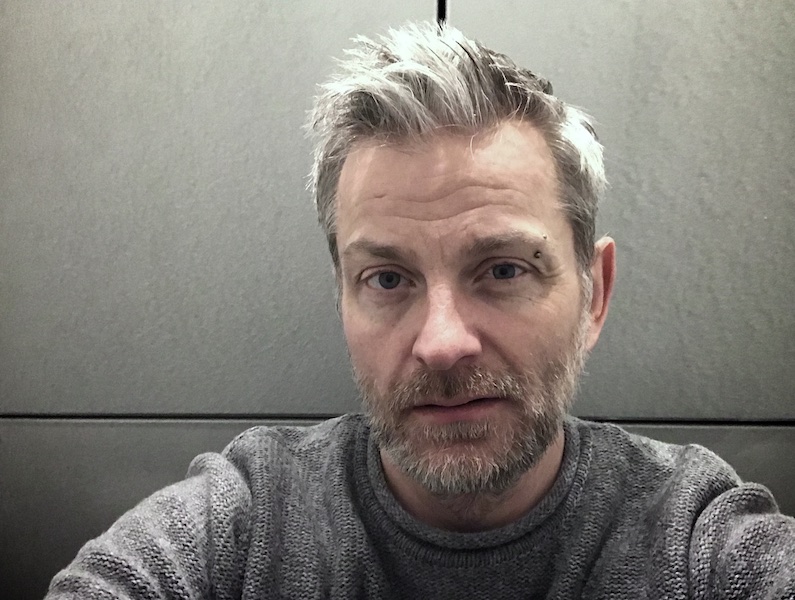
Dr Matthew Caldwell
Matthew spent 15 years working in commercial software development before moving to research science through the UCL CoMPLEX interdisciplinary doctoral training programme. In 2012 he received his PhD in Biophysics for work combining computational modelling, experimental neuroscience and cutting edge nanoscale imaging. A year of post-doctoral research was also supported by CoMPLEX, applying machine learning and model-based statistical signal processing approaches to the analysis of single channel electrophysiological data. This was followed by 3 years in the UCL Biomedical Optics Research Laboratory, modelling the physiological processes in the brain that give rise to signals measurable by multimodal brain imaging, in particular near-infrared spectroscopy. He is currently working on machine learning for 2D and 3D images in the context of transport security.
Publications
Journal Papers
| M. Caldwell, F. Scholkmann, U. Wolf, M. Wolf, C. Elwell, I. Tachtsidis. Modelling confounding effects from extracerebral contamination and systemic factors on functional near-infrared spectroscopy. NeuroImage. 143:91–105, 2016. |
| T. Hapuarachchi, F. Scholkmann, M. Caldwell, C. Hagmann, S. Kleiser, A. J. Metz, M. Pastewski, M. Wolf, I. Tachtsidis. Simulation of Preterm Neonatal Brain Metabolism During Functional Neuronal Activation Using a Computational Model. Advances in Experimental Medicine and Biology, 876:111–120, 2016. |
| M. Caldwell, T. Moroz, T. Hapuarachchi, A. Bainbridge, N. J. Robertson, C. E. Cooper, I. Tachtsidis. Modelling blood flow and metabolism in the preclinical neonatal brain during and following hypoxic-ischaemia. PLoS ONE, 10(10):e0140171, 2015. |
| M. Caldwell, T. Hapuarachchi, D. Highton, C. Elwell, M. Smith, I. Tachtsidis. BrainSignals Revisited: simplifying a computational model of cerebral physiology. PLoS ONE, 10(5):e0126695, 2015. |
| S. J. L. Del Linz, E. Willman, M. Caldwell, D. Klenerman, A. Fernández & G. W. J. Moss. Contact-Free Scanning and Imaging with the Scanning Ion Conductance Microscope. Analytical Chemistry, 86(5):2353–2360, 2014. |
| M. Caldwell, S. J. L. Del Linz, P. Novak, Y. E. Korchev, T. G. Smart & G. W. J. Moss. Method for estimating the tip geometry of scanning ion conductance microscope pipets. Analytical Chemistry, 84(21):8980-8984, 2012. |
| P. Novak, C. Li, A. I. Shevchuk, R. Stepanyan, M. Caldwell, S. Hughes, T. G. Smart, J. Gorelik, V. P. Ostanin, M. J. Lab, G. W. J. Moss, G. I. Frolenkov, D. Klenerman & Y. E. Korchev. Nanoscale live-cell imaging using hopping probe ion conductance microscopy. Nature Methods, 6(4):279-281, 2009. |
Conference Abstracts
| M. Caldwell, F. Scholkmann, U. Wolf, M. Wolf, C. Elwell, I. Tachtsidis. Computational modelling of the effects of systemic physiology on brain haemodynamics suggests that physiological confounding is able to both mask and mimic functional activation. fNIRS 2016, Paris, France. |
| F. Scholkmann, M. Caldwell, T. Hapuarachchi, U. Wolf, M. Wolf, I. Tachtsidis. The significance of systemic changes (blood pressure and PaCO2) in functional studies using NIRS. fNIRS 2014, Montreal, Canada. |
| M. Caldwell, T. Hapuarachchi, D. Highton, C. Elwell, I. Tachtsidis. A family of mathematical models of cerebral physiology to aid interpretation of multimodal datasets from healthy volunteers and brain injured patients. Physiology 2014, London, UK. |
| T. Hapuarachchi, F. Scholkmann, M. Caldwell, C. Hagmann, S. Kleiser, M. Pastewski, M. Wolf, I. Tachtsidis. Simulation of neonatal brain metabolism during functional activation using a computational model. ISOTT 2014, London, UK. |
| M. Caldwell, A. D. Robertson, D. C. H. Benton, T. G. Smart, G. W. J. Moss. An approximate maximum a posteriori approach to separating distinct populations of post-synaptic events. IUPS 2013, Birmingham, UK. |
| M. Caldwell, S. J. L. Del Linz, T. G. Smart, G. W. J. Moss. Estimating the geometry of scanning ion conductance microscope pipettes from resistance variation with breakage. Biophysics 2013, Philadelphia, USA. |